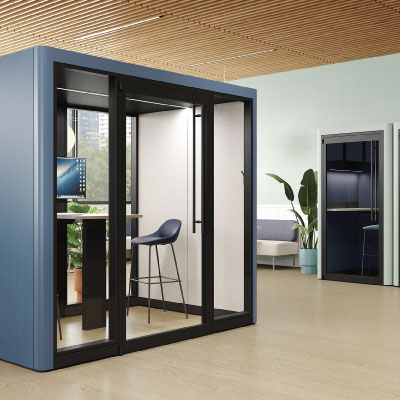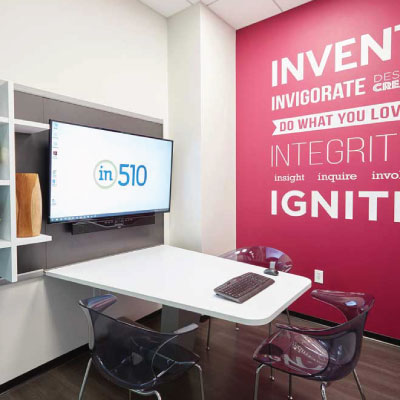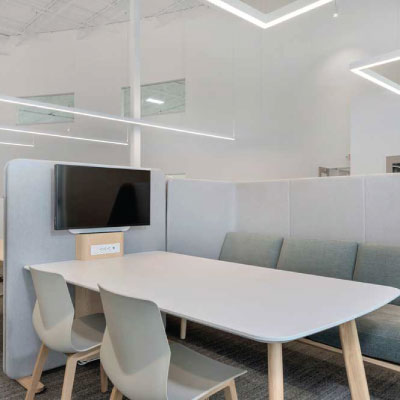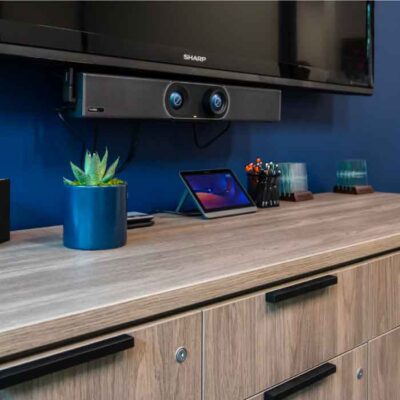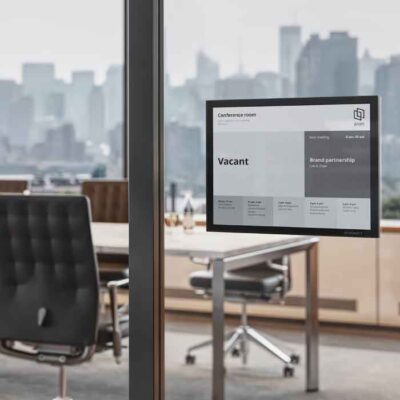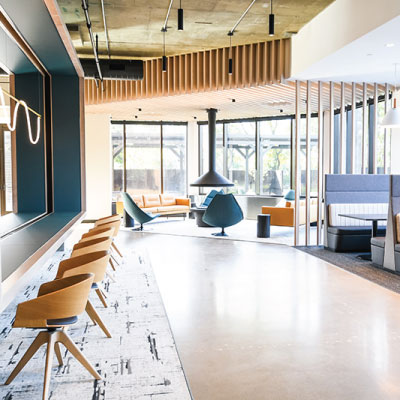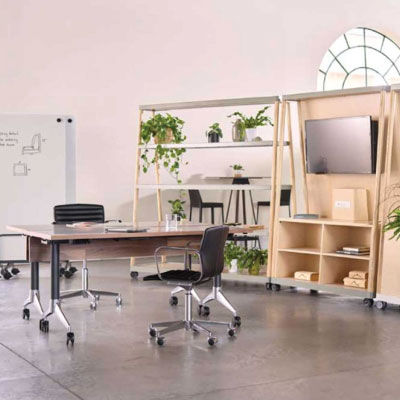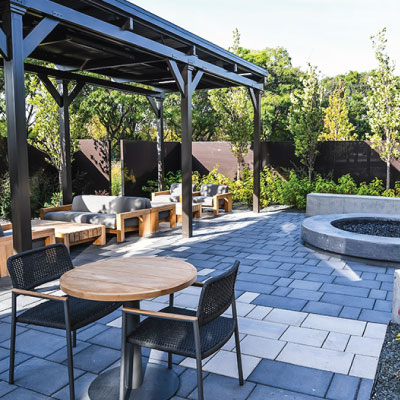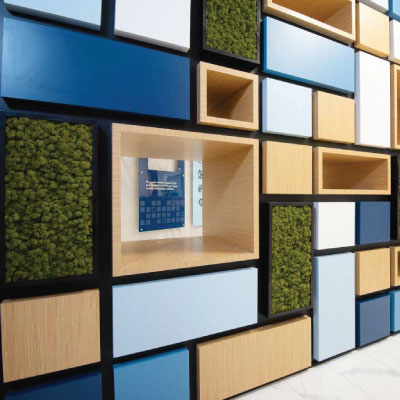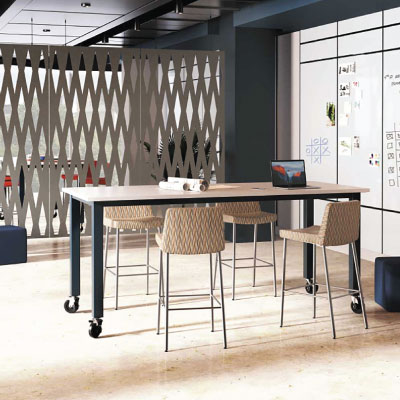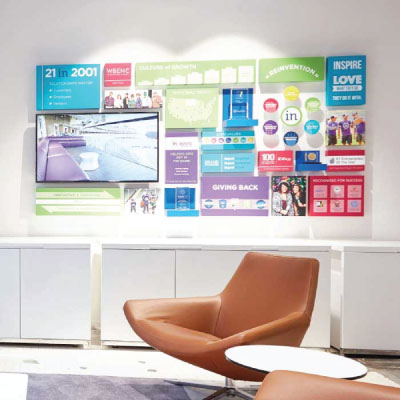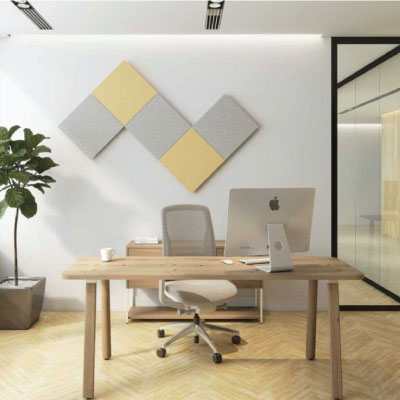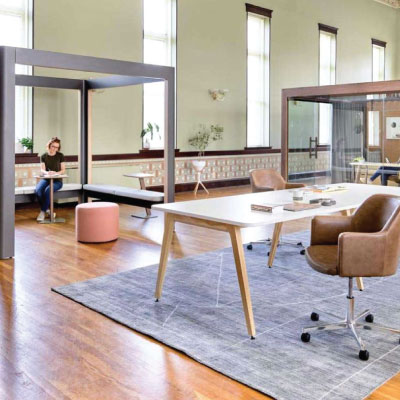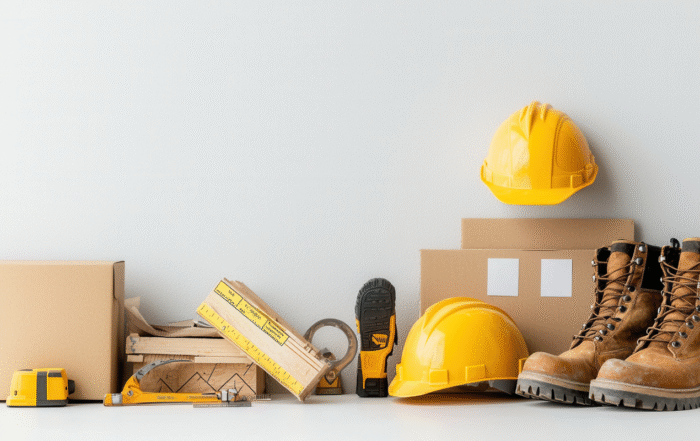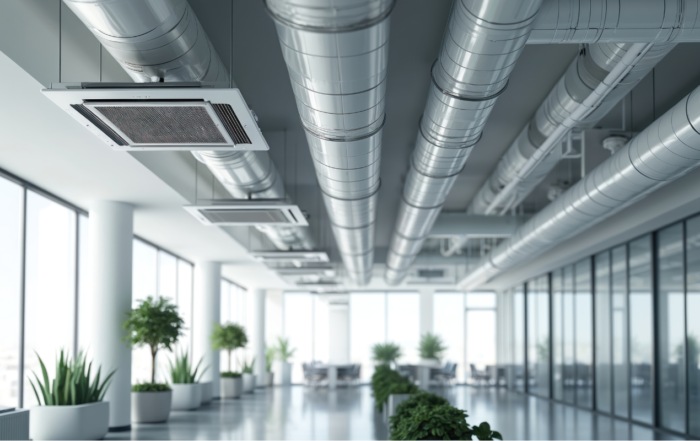2024 Workplace Trends
Navigating the 2024 workplace landscape reveals a blend of tradition and innovation. We’ll delve into the integrated office, spotlight sustainability initiatives, uncover the latest in technology, emphasize wellness strategies, and highlight the importance of adaptability. Stay tuned as we explore the trends shaping tomorrow’s professional landscape.
1. Integrated Office Design: Remote Work is Here to Stay
As hybrid work becomes a lasting fixture in the modern work environment, organizations are prioritizing office design strategies that seamlessly integrate remote flexibility with in-person collaboration.
To cater to the growing remote workforce, companies are incorporating design elements such as enhanced acoustics and dedicated collaboration zones, ensuring that off-site team members remain connected and engaged.
Alongside remote-friendly features, there’s a renewed focus on creating vibrant collaborative environments within the office. These spaces are designed to inspire creativity and foster teamwork among employees who opt for in-person interactions.
The hybrid work models is driving the redesign of office layouts to optimize efficiency while accommodating diverse work styles. This includes the development of flexible workstations, multifunctional spaces, and technology integration to facilitate smooth transitions between virtual and physical work environments.
As the hybrid work trend solidifies, office designs will continue to evolve, with a greater emphasis on integrating virtual collaboration tools, refining flexible workspaces, and enhancing employee well-being and productivity.
Integrated office design represents a forward-thinking approach to workplace planning, aiming to create versatile environments that support both remote work and in-person collaboration, thereby fostering connectivity, efficiency, and innovation.
2. Technology: The Rise of Smart Office Design
Smart furniture is reshaping the modern office landscape, seamlessly blending technology with ergonomic design. In 2024, we’re witnessing a surge in tech-integrated workspaces where furniture—be it desks with wireless charging or conference tables with built-in screens—enhances connectivity and boosts productivity.
- Integration of Modern Tech: In 2024, there’s a noticeable trend towards furniture that isn’t just functional but technologically advanced. From desks equipped with digital displays to ergonomic chairs with integrated sensors, these advances signify the shift to create a workspace where technology elevates daily operations.
- Efficiency and Connectivity: The incorporation of tech-driven furniture is reshaping office workflow. Conference tables with integrated screens streamline presentations and collaborations, while desks with built-in wireless charging simplify device management and reduce workspace clutter. These features collectively boost productivity and connectivity within the office environment.
- The Emergence of Smart Offices: Beyond individual furniture pieces, the broader vision is that of smart offices. Initiatives such as Gymshark’s human-centric smart lighting exemplify this trend. By simulating natural daylight and continually adapting to the office’s needs, such systems optimize employee comfort, concentration, and performance.
- Anticipated Innovations: As the trajectory of office design evolves, several anticipated innovations are on the horizon. Voice-activated controls are poised to revolutionize task management and security protocols, offering a hands-free and intuitive experience. Meanwhile, automated features like blinds adjusting to sunlight and smart sensors monitoring air quality underscore the commitment to creating adaptive, employee-friendly workspaces.
3. Sustainability: Furniture with a Purpose
In 2024’s office design landscape, sustainability is key. Companies are not only adopting green practices but also embracing the WELL Building Standard for holistic workplace well-being. This commitment is evident in the shift toward eco-friendly initiatives like upcycled furniture, LED lighting, and sustainable materials, reflecting a deeper focus on environmental responsibility and employee wellness.
UPCYCLED FURNITURE
UPCYCLED FURNITURE
Sustainable office spaces are leaning towards upcycled furniture, breathing new life into discarded materials. From transforming old chairs into vibrant footstools to repurposing various items, upcycling not only reduces waste but also adds a unique, creative flair to the office environment.
RECYCLED MATERIALS
RECYCLED MATERIALS
Office layouts are adopting materials with high recycled content, such as carpets, flooring, and wall coverings made from up to 70% recycled products. This commitment to using recycled materials underscores a dedication to reducing the environmental impact of office spaces.
LED LIGHTING
LED LIGHTING
Energy-efficient LED lighting is becoming a standard in sustainable office design. Not only does it reduce energy consumption, but it also provides better illumination, contributing to a vibrant and productive workspace.
PAPER-FREE POLICIES
PAPER-FREE POLICIES
Embracing digital transformation, offices are implementing paper-free policies to minimize paper waste. This move not only aligns with environmental goals but also streamlines operations, fostering a more efficient and eco-conscious workplace.
REUSABLE PRODUCTS
REUSABLE PRODUCTS
Sustainable catering practices, including the use of reusable coffee cups and plates, are gaining prominence. This not only reduces single-use plastics but also encourages a shift towards more sustainable and environmentally friendly choices.
From upcycled furniture to recycled materials, LED lighting, paper-free policies, and reusable catering practices, the focus extends to sustainable office furniture crafted from reclaimed wood, recycled metals, and eco-friendly fabrics. This trend is fueled by growing environmental awareness, corporate responsibility, and a commitment to employee well-being.
Office furniture crafted from reclaimed wood, recycled metals, and sustainable fabrics. These materials not only enhance the aesthetic appeal of the office but also contribute to a reduced environmental footprint.
The growing concern for the environment is a driving force behind the shift towards eco-friendly office furniture. Companies are realizing that embracing sustainability is not just a trend but a responsible choice for the health of the planet and future generations.
Businesses are adopting sustainable practices as part of their corporate social responsibility goals. This commitment to environmental stewardship not only reflects positively on the company but also resonates with an increasingly eco-conscious workforce and clientele.
Sustainable materials contribute to healthier indoor air quality, benefiting the well-being of employees. The emphasis on creating a healthy and supportive work environment aligns with the broader goal of fostering a positive and productive workplace culture.
In 2024, sustainability isn’t just a trend; it’s a responsible choice reflecting a commitment to the planet and future generations. As offices prioritize eco-friendly practices, they send a clear message of corporate responsibility while appealing to an increasingly eco-conscious audience.
4. Designing for Well-Being: The Evolution of the Modern Office
In the dynamic landscape of modern workspaces, there’s a big shift towards fostering employee well-being. This strategic approach not only seeks to combat burnout but also aims to elevate overall productivity and satisfaction. It isn’t just about making spaces look good; it’s about boosting the office mood and work vibe.
- Feel-Good Environments: Modern offices integrate amenities like fitness centers, relaxation rooms, and game areas, promoting self-care and camaraderie among employees.
- Addressing Burnout: As remote work blurs boundaries, businesses are repurposing spaces to offer reservable amenities, such as relaxation zones, to rejuvenate employees and foster social connections.
- Wellness-Centric Furniture: 2024 sees a surge in ergonomic designs and furniture with built-in relaxation features, aiming to create stress-free and comfortable workspaces that boost productivity.
- Prioritizing Well-Being: Beyond physical comfort, office design focuses on mental ease, light, and overall comfort, with a keen emphasis on wellness-centric spaces like meditation rooms.

